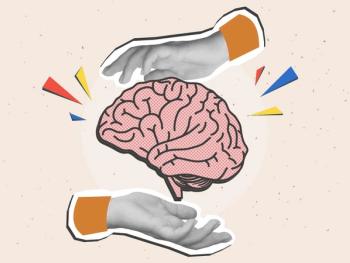
- Psychiatric Times Vol 35, Issue 12
- Volume 35
- Issue 12
Jacques Lacan: The Best and Least Known Psychoanalyst
Lacan has a devoted following throughout much of the non-English-speaking world (where he is the best-known psychoanalyst) but he is mostly unknown to the English-speaking psychiatric community (where he is the least-known psychoanalyst).
PSYCHOANALYSIS
Jacques Lacan was a Parisian psychiatrist who was born in 1901 and who died in 1981. He gained an international reputation as an original interpreter of Sigmund Freud’s work. He visited the United State three times, twice in 1966 and once in 1975, where he lectured at a dozen American universities.
Lacan’s written work and transcribed lectures are often difficult, if not impossible, for most American (and other) mental health professionals to comprehend. His ideas are novel and complex and many seem obscure and enigmatic. Despite the difficulties, Lacan has a devoted following throughout much of the non-English-speaking world (where he is the best-known psychoanalyst) but he is mostly unknown to the English-speaking psychiatric community (where he is the least-known psychoanalyst). This paradox can also be accounted for by the fact that Lacan’s mother tongue, French, is closer to the romance languages of Spanish and Italian.
About five years ago, a colleague of mine asked me to review a book by Bruce Fink, a Lacanian psychoanalyst who splits his time between Pittsburgh and Paris, and who has written many books about Lacan and has translated much of what Lacan has written. After reading one such book the scales fell from my eyes, so to speak, and I’ve been hooked on Lacan ever since.1
Jacques Lacan was the eldest of three children and was born into an upper middle-class Parisian family where his father, Alfred, was a sales representative for a large firm, and his mother, Emilie, was a housewife and staunch Catholic. Lacan attended Catholic schools through college and his younger brother entered a monastery. Lacan excelled in religious studies and Latin and he later hired a private tutor for a year to give him a crash course in philosophy. His study of Spinoza contributed to him becoming an atheist.
Lacan attempted to join the army after college but was rejected because he was too skinny. Instead he applied to medical school and attended the Faculty of Medicine at the University of Paris from 1927 to 1931. After medical school he specialized in psychiatry and studied under Gaeten de Clerambault, after whom De Clerambault’s Syndrome, or Erotomania, is named, and who had an important influence on Lacan’s decision to become a psychoanalyst. Lacan’s MD thesis, “On Paranoiac Psychosis and its Relationship to the Personality,” previewed his later interest in the psychotherapeutic treatment of patients with psychosis.
In the 1930s, Lacan became acquainted with a group of Avant-guard writers and artists in Paris. He became friends with Salvador Dali in whose paintings he saw expressions of the unconscious in dreams, and Lacan became Pablo Picasso’s personal physician. At the end of his career Lacan developed a renewed interest in James Joyce and attended the first public reading by Joyce of Ulysses. Lacan was analyzed by Rudolf Lowenstein between 1932 and 1938 and gained the status of “psychoanalyst” in 1936.
The Mirror Stage and the imaginary register
In 1936, Lacan presented a paper to the International Psychoanalytical Association in Marienbad, Germany on the Mirror Stage of development. Human beings are born in an immature state, only gradually being able to walk and talk, and Lacan wondered how children developed their relationship to their bodies. He postulated, based on animal behavior and child observation studies, that children between the ages 6 and 18 months, identify with their image in a mirror and that this gives the child the jubilant perception of itself as whole and complete, in contrast to the child’s inner experience of being fragmented and disconnected.
Lacan called this false image of wholeness in the mirror, the “ego.” His use of the word “ego” was different from Freud’s as Lacan frequently put “new wine into old bottles.” At the same time, Lacan called his entire work a “return to Freud,” believing that his was a closer and more accurate reading of Freud than how others understood Freud. “Alienation” was the term that Lacan used to describe the tension between the child’s inner uncoordinated and disconnected perception of self and the integrated image in the mirror.
Following his description of the Mirror Stage, Lacan made a profound leap. He postulated that the child’s false perception of self in the mirror is characteristic of one of the three so-called registers, or orders, in which human beings experience the world. He called this first register the “Imaginary” register, related to the word image and not to “imagination” or “imagining.” The “imaginary” register is the world of sensations-visual, olfactory, auditory, and tactile-and is the register we use to compare ourselves to others. When we meet a patient for the first time, or anyone else for that matter, our initial impression takes place in the “imaginary register. We are indeed “judging a book by its cover.”
Symptoms and speech
In 1895, Freud made a close association between symptoms and speech in his Studies on Hysteria. Lacan took this further, describing symptoms literally as “words trapped in the body.” This is not as strange as it sounds. We all believe that when patients speak to us-and their words leave their mouths and their bodies-this has something to do with them feeling better and making positive changes in their lives over time.
Lacan even suggests that: “We are our words, rather the other way around.” It is not we who speak our words, but instead the words that we speak define who we are. A novel thought indeed! And yet, as soon as we speak, we are immediately misunderstood by the listener, for we all attach our own individual meanings to the words we use, that are always going to be more or less different from how the listener understands them. To quote Lacan: “Language is meant to be misunderstood.” Much of psychotherapy consists of asking our patients to clarify and elaborate on what they have just told us, so we can have a closer understanding of what they have in mind.
In the illustrated book, Introducing Lacan,2 the example is given of a girl who repeatedly banged her head on the wall next to her bed each morning.” This symptom disappeared when she connected her behavior in therapy to her mother having told her that her father often “woke up on the wrong side of the bed.”
Signifier and signified
Lacan became particularly interested in the work of Ferdinand de Saussure, one of the founders of 20th century linguistics. De Saussure described the linguistic sign composed of (1) a signifier, ie, acoustic image of the word we hear, connected to (2) a signified, ie, concept. For example, the sound of the word “ox” will make an acoustic impression on the listener. Each of us, however, will have a somewhat different idea of what this “ox” is like. For some of us it will be Paul Bunyan’s sidekick, Babe the Blue Ox, for others, the meat in oxtail soup, and for others the ox in Johann Heinrich Roos’s 15th century painting of an ox, and so on. Therefore, the signified, in this example, is the concept of an ox, and not a particular ox.
Lacan famously said, “The unconscious is structured like a language.” He meant that the unconscious is made up of “chains of repressed signifiers” that relate to one another through their own rules of metaphor and metonymy. These repressed signifiers express themselves through slips of the tongue, associations to dreams, mistaken actions, and through psychiatric symptoms.
By punctuating-a Lacanian term meaning emphasizing-signifiers that stand out to the therapist, the patient will often associate to other signifiers in the signifying chain. For example, when one of my patients used the word “challenging,” referring to her job several times within a brief period I interjected, “challenging”? She replied, “I used to challenge my brother to checkers when we were little and, since he was younger than me, I usually beat him and made him cry. And, I remember exactly where I was when the Challenger blew up and all seven astronauts died.” This allowed the patient to put into words her previously unconscious aggression.
Lacan pointed out that some signifiers have special importance to us, he called these “master signifiers.” These are the limited number of signifiers that most define who we are. A little girl, Susan, showed me a school poster on which she had been asked to write some important things about herself: that her name is Susan, that she is four and a half years old, that she has red hair and green eyes, and that she likes to eat potato chips. These are some of Susan’s master signifiers.
Proper names are special and different from all other signifiers: they only point to one unique signified-the person with that name! I routinely ask patients where their names come from-both their first and last names-and I immediately learn about the symbolic register (see below) into which they were born
The symbolic register
In the 1950s, Lacan developed the idea of the “symbolic register,” that part of human existence that includes language, culture, laws, traditions, rituals, and religion. This symbolic register is waiting for us when we are born. Our parents have often already selected a name for us, we learn the language of our family, we take part in our family’s traditions and rituals, etc. Even a vision of our future has often been mapped out for us. It is no accident that the children of musicians, physicians, and even morticians, often follow in their parents’ careers.
The symbolic register increasingly takes its place alongside the imaginary register. In another example from the book, Introducing Lacan,2 a mother is telling her child who is being held up in front of a mirror: “You’ve got grandma’s eyes,” “You look just like your father,” etc. The child will later identify with, rebel against, or do some of each, with what it has absorbed through the symbolic register.
One of Lacan’s therapeutic goals was to help the patient increasingly move from the imaginary to the symbolic register. Martin Luther King, Jr. expressed this idea well: “I look to a day when people will not be judged by the color of their skin, but by the content of their character.”
The real register
In 1953, Lacan identified a third register of human existence, the “real.” Whereas, the imaginary is the world of immediate sensory perceptions, and the symbolic is based on language and gives meaning to everything around us, the real is whatever else there is that is devoid of meaning. Quoting Lacan: “The real is all that cannot be symbolized and that is excluded from the symbolic and imaginary registers.”
Before and soon after a baby is born and has not yet acquired words or language, it is living entirely in the real register. As soon as it learns to say “mama” and other signifiers, the baby has begun to take part in the symbolic register that “makes a cut in the real.”
Whenever we speak, there is always much more that remains unspoken, and whatever is left unsaid and unsymbolized, exists in the real. At the other end of the life spectrum, for patients with advanced Alzheimer disease for whom words have mostly lost their meaning, they are increasingly living in the register of the real.
Lacan’s diagnostic categories
Lacan, following Freud, had three major diagnostic categories: (1) Neurosis – that he divided into the Obsessive and the Hysteric personality; (2) Perversion; and (3) Psychosis. All DSM V categories collapse into these three major categories of diagnosis for Lacan.
Neurosis 1: the hysteric. The hysteric asks: “What is it to be a woman (or a man)?” who lives her (or his) life through “the other.” A young adult patient of mine with many features of borderline personality disorder-self-mutilation, suicidal ideation, substance abuse, unstable relationships, and splitting as a prominent defense mechanism-was obsessed with an idealized young woman movie star who had died by suicide. My patient wanted me (“the other”) to tell her why she shouldn’t also kill herself.
A Lacan quote came to mind: “The patient knows everything and the analyst knows nothing,” meaning that a patient’s conflicts exist entirely within his or her own unconscious and not in the mind of the therapist. Therefore, I told the patient that I couldn’t tell her what she should do because only she had the answer to this question. She expressed immediate relief from the self-destructive idea that she had been entertaining. I believe for three reasons: (1) what I said was true; (2) my response gave her a greater sense of agency; and (3) we now had a method to help her free herself from her self-destructive obsession-with both of us listening to the two sides of her conflict, the part of herself that wanted to follow in the footsteps of her beloved movie star and the part of her that wanted to remain alive. Needless to say, I too was relieved by not needing to justify to my young patient why she should continue to live.
Neurosis 2: the obsessive. The obsessive asks: “Am I alive or am I dead?” and procrastinates interminably about getting things done, in an unconscious attempt to forestall the eventual certainty of his or her death.
A man in his 40s was still living at home with his parents and had struggled to complete his bachelor’s degree for many years. He increased the frequency of his appointments with me from once to twice a week but then became increasingly quiet in the sessions. When I said “You’re quiet,” he replied, “Now that I’m coming twice a week, it doesn’t matter if I talk as much as before, since I’m here twice as often.” I remarked: “You act as if you have all the time in the world to get done what you say you want to accomplish in life.”
Lacan’s psychodynamic formulations
Each of Lacan’s three major diagnostic categories is based on how the child resolves the Oedipal complex. The neurotic accepts that the “father” is the object of mother’s desire and hopes to find a “mother” substitute (an intimate partner) in the future. The pervert also accepts that the “father” is the object of mother’s desire but denies (disavows) this traumatic reality and uses a fetish object as a partial substitute for the mother to satisfy his desires. The psychotic maintains a dyadic relationship to the mother because the father figure is absent during the early years of the child’s development. In Lacanian terms, this results in a foreclosure of the paternal function with the psychotic person developing/experiencing feelings of omnipotence, grandiosity, and terror.
When needing to cross the street: The obsessive acts as if he has all the time in the world and waits at the corner until there are absolutely no cars coming. The hysteric puts herself in the place of the other and will only cross the street when others are also crossing the street. The pervert acknowledges that he should cross at the light but disavows the law and jaywalks. And the psychotic acts as if there is no law (there has been a foreclosure of the paternal function) and crosses without paying attention to whether there is traffic.
Lacan believed there was no “normal person” and that we all fall into one or another (or a combination) of the three diagnostic categories. In this regard, Lacan agreed with Elvin Semrad who defined a psychotherapist as: “One big mess treating a bigger mess.”
Wish, need, demand, and desire
To Lacan, a “wish” is something we consciously want-for example, a million dollars or a new pair of shoes. A “need” reflects a physiological necessity, such as needing water, food, or sleep, but also love. “Demands” are endless requests for specific things, for example a baby pleading for a ball, a teddy bear, or a coloring book. But as soon as one demand is fulfilled, a new demand takes its place. A parent who tries to keep up with all of the child’s demands, ends up with an extremely spoiled child. The demand for love is also never fully satisfied and requires repeated expressions of reassurance. “Desire” is unconscious and can never be fulfilled but it directs the trajectory of our lives. In addition, according to Lacan: “The subject’s desire is the Other’s desire,” or “A person’s happiness comes from making the other person happy.” A major goal of Lacanian therapy is to help the patient discover his or her own (unconscious) desire. When a patient is five or ten minutes late, I email and phone the patient, letting him know that I am waiting for him and that I hope to see him soon: I want my desire to see the patient become the patient’s desire to be seen by me.
The borromean knot
Later in his career, Lacan began to express his ideas in mathematical formulae and diagrams, wanting to make them more precise. Using the three interlocking rings from the 16th century borromean crest, Lacan called this the “RSI knot,” each ring representing the real, the symbolic and the imaginary registers. They all need each other to hold the knot together-if any one of the rings is removed, the other two will come apart. Like a Venn diagram, they all have overlapping and separate surface areas. This design also suggests an equivalence between the three registers.
The sinthome
Toward the end of his life, in the 1970s, Lacan proposed adding a 4th ring to the borromean knot that he called the “sinthome”-an old French word for symptom and making a word play on “Saint Thomas.” This fourth ring held the knot together if one of the other three rings was broken. This suggested that a patient’s symptom is adaptive, often keeping the patient from decompensating. Lacan was introduced to James Joyce early in his career, and he later suggested that Joyce’s writing, itself chaotic and disturbed (eg, Finnigan’s Wake) was a sinthome that kept Joyce from becoming psychotic.
The idea that a patient’s symptom serves a purpose is reflected in the admonition that we should not immediately try to take the patient’s symptom away before we understand what role it plays in the patient’s life.
The short, or variable length, session
Relatively early in his career, Lacan introduced the variable-length, also known as the “short,” session for which he was severely criticized by his non-Lacanian colleagues. Lacan believed that sessions should end unexpectedly to emphasize an important point or interpretation, to prevent the patient from filling up the session with trivia until the last minutes, and to avoid having the patient script the session in advance. His critics attributed his “short sessions” to financial greed and to gain additional adherents to the Lacanian cause.
Lacanian psychoanalysis today
In 1980, a year before he died, Lacan dissolved the Ecole Francaise de Psychoanalysis that he had founded 16 years earlier and a new school, the Ecole de la Cause Freudianne, continues his work. In the US, there are three “Lacanian Forums” or study groups, one in Washington, DC, one in Denver, Colorado, and one in San Francisco, and there are many Lacanian groups in Europe and three major Lacanian schools in South America.
Additional Reading
Baldwin Y. Let’s Keep Talking: Lacanian Tales of Love, Sex and Other Catastrophes. London: Karnac Books; 2016.
Bailey L. Lacan: A Beginner’s Guide. London: Oneworld Publications; 2009.
Izcovich L. The Marks of a Psychoanalyst. New York: Karnac Books; 2017.
Fink B. A Clinical Introduction to Freud. New York: Norton Books; 2017.
Fink B. A Clinical Introduction to Lacanian Psychoanalysis: Theory and Technique. Boston: Harvard University Press; 1997.
Disclosures:
Dr Perman is Clinical Professor of Psychiatry, George Washington University Medical Center, Washington, DC. Dr Perman reports no conflicts of interest concerning the subject matter of this article.
References:
1. Fink B. Against Understanding: Commentary and Critique in a Lacanian Key, Vol 1. London; New York: Routledge Taylor & Francis Group; 2014.
2. Leader D, Appignanesi R, Groves J. Introducing Lacan: A Graphic Guide. London: Icon Books Ltd; 2005.
Articles in this issue
almost 7 years ago
Introduction: Turning Suicide Prevention Science Into Actionalmost 7 years ago
Words Matter: The Language of Suicidal Self-Directed Violencealmost 7 years ago
Child and Adolescent Suicide and Self Harm: Treatment and Preventionalmost 7 years ago
Reducing Suicide Risk: The Role of Psychotherapyalmost 7 years ago
When Your Child Is Sickalmost 7 years ago
Medical Aid in Dying: Ethical and Practical Issues for Psychiatristsalmost 7 years ago
Solving the Mystery of Military Mental Health: A Call to Actionabout 7 years ago
Listening to Dead Patientsabout 7 years ago
Giving Thanks for These PsychiatristsNewsletter
Receive trusted psychiatric news, expert analysis, and clinical insights — subscribe today to support your practice and your patients.














